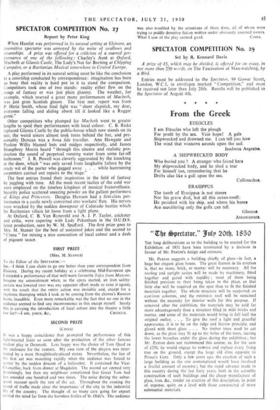"Tbe ippettator," juip 20th, 1850
Tun long deliberations as to the building to be erected for the Exhibition of 1851 have been terminated by a decision in favour of Mr. Paxton's design and estimate.
Mr. Paxton suggests a building chiefly of glass—in fact, a huge but elegant glass house. The great feature in its erection is, that no stone, brick, or mortar will be necessary. All the roofing and upright sashes will be made by machinery, fitted together and gazed with rapidity ; most of them being finished previous to their being taken to the place, so that little else will be required 9n the spot than to fit the finished materials together. The whole structure will be supported on cast-iron columns, and the extensive roof will be sustained without the necessity for interior walls for this purpose. If removed after the exhibition, the materials may be sold far more advantageously than a structure filled in with bricks and mortar, and some of the materials would bring in full half the original outlay. . . . To give the roof a light and graceful appearance, it is to be on the ridge and furrow principle, and glazed with sheet glass. . . . No timber trees need be cut down, as the glass may fit. up to the boles of the trees, leaving the lower branches under the glass during the exhibition ; but Mr. Paxton does-not recommend this course, as, for the sum of £250, he would engage to remove and replace every living tree- on the ground, except the large old elms opposite to Prince's Gate. Only a few years ago, the erection of such a large building as the one contemplated would have involved a fearful amount of expense ; but the rapid advance made in this country during the last forty years, both in the scientific construction of such buildings and the cheap manufacture of glass, iron, &c., render an erection of this description, in point of expense, quite on a level with those constructed of more substantial materials.


































 Previous page
Previous page